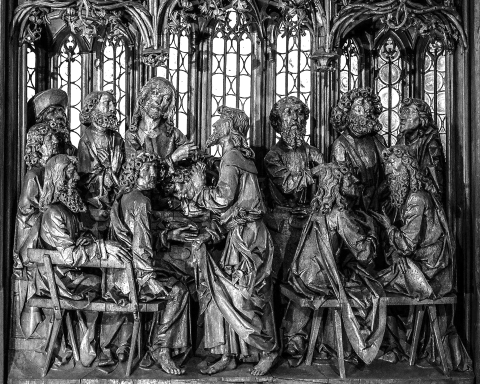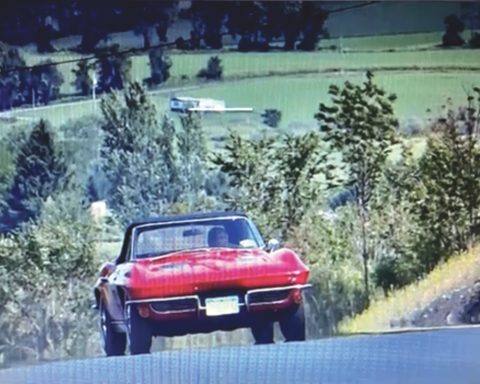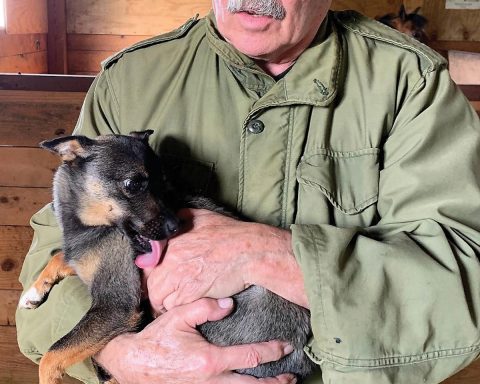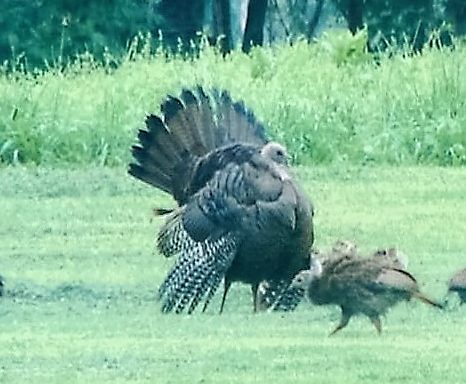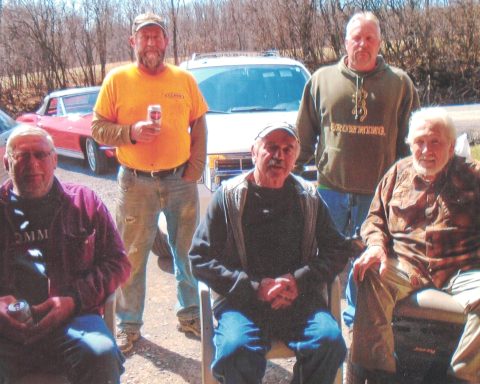Riemenschneider worked in a Gothic style and produced figures whose faces clearly expressed sensitive, complex inner emotions. While looking at the altar you could almost hear Christ saying, “One of you will betray me.” The various “Not me!” expressions on the faces of the disciples are easy to read.…
terry berkson
It seems this one-legged guy they knew was up in an oak, building a tree stand, when his new prosthesis, which he didn’t secure properly, fell to the ground and rolled into a ravine.…
While I was taking care of the horses, Runty was racing through the building like The Road Runner. A few minutes later he stopped short and jumped up on my leg for a pat on the head.…
Christmas songs were melting out of the radio as a cold wind howled outside. I pictured Patches’ Pond working on the turkey. After a little coaxing, Alice admitted that I had come up with an ingenious last-minute solution. The kids would be arriving the next day.…
Several years ago, two friends from Richfield, Tiger Goodale and Rudy Marriot, came up the drive with what they thought was a good story for me to write. They had been in the Genesee, one of the local watering holes, when this guy came in and ...…
Well over 40 years ago, my good friend Buddy Crist was diagnosed with what doctors thought was Lou Gehrig’s disease. Believing that he didn’t have much time left, he decided not to withdraw from an active life but to instead embrace everyone he knew by throwing a weekend mountain party up on his beloved Angel Hill outside the village of Schuyler Lake.…
Iron String Press Extends Subscription Drive Benefitting NFPs By DARLA M. YOUNGSOTSEGO COUNTY Since August, new subscribers to “The Freeman’s Journal” newspaper and to the AllOtsego.com website have had the opportunity to assist their choice of one of four area charitable organizations by donating $5.00 of the fee when they subscribe annually. Thanks to the favorable results of this special offer, parent company Iron String Press Inc. has extended its “Putting the Community Back Into the Newspaper” subscription drive through…
Life Sketches by Terry Berkson Father’s Day Remembrances: ‘A Sky View of Dad’ One spring morning, I deliberately made myself late for school so that Dad would have to drive me in his taxi. I knew the teacher would be angry and wouldn’t believe any of my usual excuses, resulting in detention during recess—but the ride was worth it. I ran down the back steps and over to the garage. In order to get the stick out of the hasp…
Life Sketches by Terry Berkson On the Bug Bus to San Antonio In 1965, the army shipped me to San Antonio, Texas for medical training. Upon completion I had the title of Preventive Medicine Specialist. This might sound impressive but, actually, “Right shoulder butterfly nets,” was a frequent order given by Sergeant Goodwine, who was marching us out to Camp Bullas to catch “sidewinders,” scorpions, black widows, wasps, tarantulas and more. Among the many diseases we learned about was malaria…
Life Sketches by Terry Berkson Retired Poultry FarmerRecalls ‘Roger’s Colossus’in Face of Avian Flu Epidemic Recently, Roger and Diane Vaughn—who operated the only small commercial poultry farm situated along the Route 20 corridor between Albany and Syracuse—retired. Theirs was one of about 15 remaining egg-laying operations in the state. At one time, there were 15 small farms like theirs within a 15-mile radius. Then, the average setup consisted of about 300,000 birds, which made the Vaughns’ flock of poultry look…


